Media | Articles
5 vehicle-value trends that point to a stabilizing market
Want a better understanding of what’s driving collector-car values? Sign up for the Hagerty Insider newsletter.
Perhaps the best word to describe what we witnessed in 2022’s collector market is “chaotic.” A year ago, we witnessed some of the most aggressive appreciation in ages. Of course, what goes up doesn’t go up forever. Toward the end of the year, we started to see a different side of the market. Previously hot segments either leveled off or receded.
That said, the market is very segmented, and different strata behave in different ways. This is where Hagerty’s collector indexes come into play. These reference notable or significant segment-movers to gauge the overall performance of the collector market.
For the past two years, we have seen incredible growth in the collector car market. The biggest question is: When will the hot streak cool? Our five collector-car indexes have all leveled out, signaling a stabilizing market and suggesting that rational buying is creeping back in.
Marketplace
Buy and sell classics with confidence
Blue-chip collectibles
Following a spurt of third-quarter activity at August’s Monterey auctions, Hagerty’s Blue Chip Index settled back into a trend of little appreciable movement. As 2022 drew to a close, this remained the same.
Despite an unpredictable stock market, the highest inflation in four decades, and constant chatter of an impending recession, the top of the collector car market remains steady. In times like this, tangible assets such as cars, art, watches, and other collectibles are often used to hedge against more traditional investments. For at least the foreseeable future, the top of the market is expected to hold its course.
These factors, as well as the holiday season being a traditionally slow time in the market, contributed to nearly every component car in the Blue Chip Index retaining level value from the previous publication. While the 1965 Shelby GT350 and Lancia Aurelia B24 Spider America posted modest gains of two percent and four percent, respectively, these were canceled out by losses of the same rate in the Aston Martin DB5 and BMW 507.
That’s the story for now, but we’ll get a better sense of the market’s direction following the January auction extravaganzas in Arizona and Florida. Stay tuned.
British cars
After reaching an all-time high in October of 2022, Hagerty’s British Car Index took a one percent step back, returning to mid-summer levels. This typically sleepy segment has once again proven to be one of the more active indexes of the Hagerty Price Guide, and a simple one percent loss tells only a portion of the story of British collector-car market.
While the index is indeed down, 70 percent of the component cars posted gains. The more affordable nature of many of these cars had much to do with it. While cars like the MGB Mk I may have seen a 10 percent gain and the Triumph TR6 a seven percent increase, the lower cost of these cars means the value bumps translate into a few thousand dollars at most. When a six-figure car like a Series I E-Type posts an 8 percent loss, it effectively wipes out the increases made by the rest of the index.
As a result, the market for British cars is in better shape than outward appearances suggest.
Ferraris
Following a three-percent increase in the third quarter, its largest in years, Hagerty’s Ferrari Index posted no movement with the latest price guide update. This is a trend that has persisted since the collector-car market began to bounce back in late 2020, and the index has only posted any measurable movement following major events such as the Amelia Island and Monterey auctions.
As with the Blue Chip Index, high-end vehicles like Ferraris have held their ground despite economic anxiety revolving around the pandemic, inflation, and volatility in other markets. Most Ferrari owners are in no rush to sell their prized cars out of necessity or to buy as a hedge against the fitful stock market. The 365 GTB/4 Daytona Coupe was the only model to post a change—a three percent loss—but it still wasn’t enough to move the index’s needle in a meaningful way.
It may be after the January auctions or even after those in Amelia Island, come March, before any potential change of currents in the Ferrari market begins to show itself. For now, it seems top-shelf segments will remain rock steady.
Muscle cars
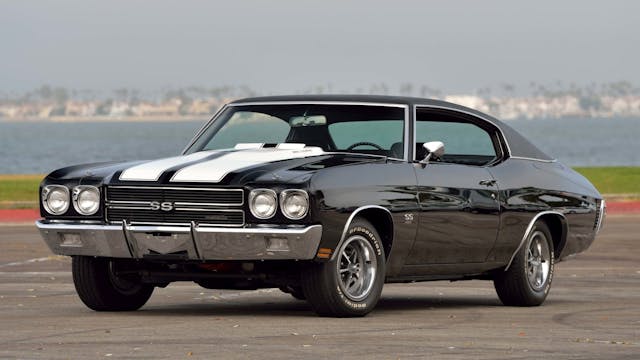
For the past five consecutive publications, Hagerty’s Muscle Car Index has posted consistent increases. Now, for the first time since late 2020, it posted a loss. The muscle-car market posted mixed results for the latter half of 2022, though, so such a result is not a big surprise.
The biggest ticks downward were the LS6 Chevelle Coupe, Shelby GT500 KR, and Pontiac GTO, which posted losses of 16 percent, 15 percent and six percent, respectively. Those blows were softened a bit, however, by a 15 percent gain for the 1964 Impala SS Convertible. Outside of these component cars, the index tells mostly the same story as the others. Many muscle-cars took small steps back, but a few still had room to grow, like the 440-equipped Plymouth Superbirds, Dodge Coronet R/Ts, and Super Bees.
While the tide appears to be turning toward a softening muscle-car market, the looming muscle-car-heavy January auctions in Kissimmee and Scottsdale could create defining themes within the muscle market for the near future. In particular, we’ll examine the sales data of top-flight examples compared to more run-of-the-mill muscle. The first quarter of 2023 will be pivotal in setting the tone for muscle cars moving forward.
German cars
As with many of the other indices covered in the Hagerty Price Guide, the German Car Index posted no meaningful movement in the last quarter of 2022. The index had been on the rise for five consecutive publications, reaching all-time highs earlier in 2022. (NB: We update our price guide quarterly.) Many of this index’s component cars represent the upper echelons of the German collector market which, like other high-end vehicles, experienced little to no movement this publication.
Not reflected here is the continued movement of lower-priced German classics and “youngtimer” cars. While high-end cars like the 300SL Gullwing tracked steady, the more affordable R129 (1989–2001) Mercedes-Benz SL320s gained 17 percent. Likewise, the 2002tii may have not moved, but BMW Bavarias shot up by 27 percent, and Isettas by 13.
With such sharp rises in collector car values since late 2020, it is probably best to keep in perspective that sharp gains often turn into fast drops. The fact that it has not occurred in the German slice of the collector-car market is promising, at least for the immediate future.
1950s American classics
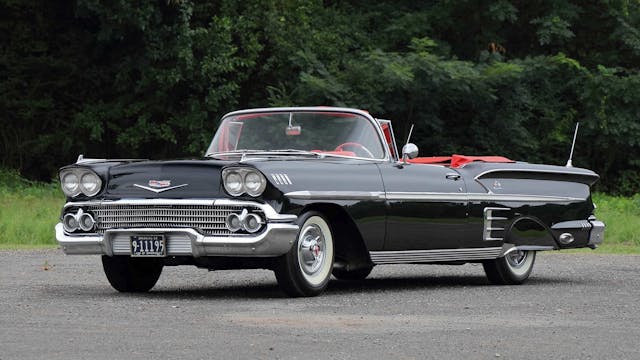
1950s American Classics was the only index that posted positive movement this publication. This one percent gain was the result of just two movers out of 19 component cars—the 1954 Buick Skylark, which posted a nine percent boost, and the 1958 Chevrolet Impala, which increased five percent.
Despite the overall steady outlook, there was a lot of activity within the segment, mostly relegated to specific models or trims. For instance, Hudson Hornet Convertibles experienced no movement in value, but sedans grew by 6.5 percent. While standard “Baby Bird” Thunderbirds didn’t change, values of the more powerful E-Code and F-Code cars grew by five percent.
At this point, it is hard to walk away with any real indications of what the market for 1950s American cars has in store. As with the muscle-car segment, the fourth quarter of the year is typically a sleepy time for trading American classics, and a real read on this market may not be possible until the January auctions.
Affordable classics
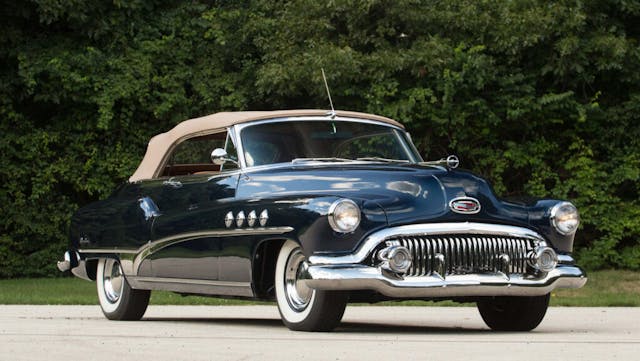
It is easy to dismiss the lack of growth in Hagerty’s Affordable Classics Index as a repeat of everything else going on in the market. That would gloss over the real story, though. The Affordable Classics Index has posted consistent gains book over book since September 2017. In fact, it has been the best and most consistent performer of all the market segments we track.
Many component cars still posted reasonable increases this period: MGBs, Buick Roadmasters, and Studebaker Larks all posted 10 percent gains. These were mainly offset by a 12 percent loss by the Datsun 240Z, which had been a major contributor to this index’s consistent growth.
While the benchmark of what is considered affordable has moved significantly since our price guide’s inception, the result this quarter is somewhat encouraging. It hints that there is a return to sanity in collecting after a long streak of massive increases.
Check out the Hagerty Media homepage so you don’t miss a single story, or better yet, bookmark it.




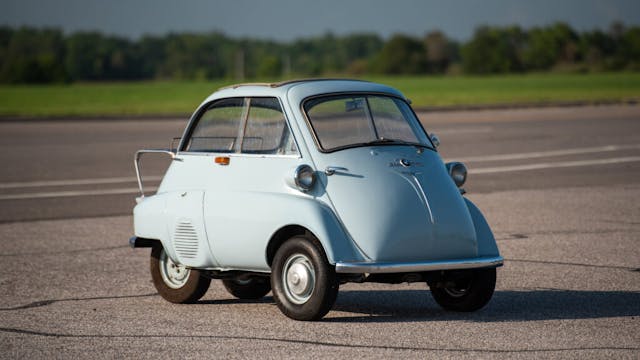
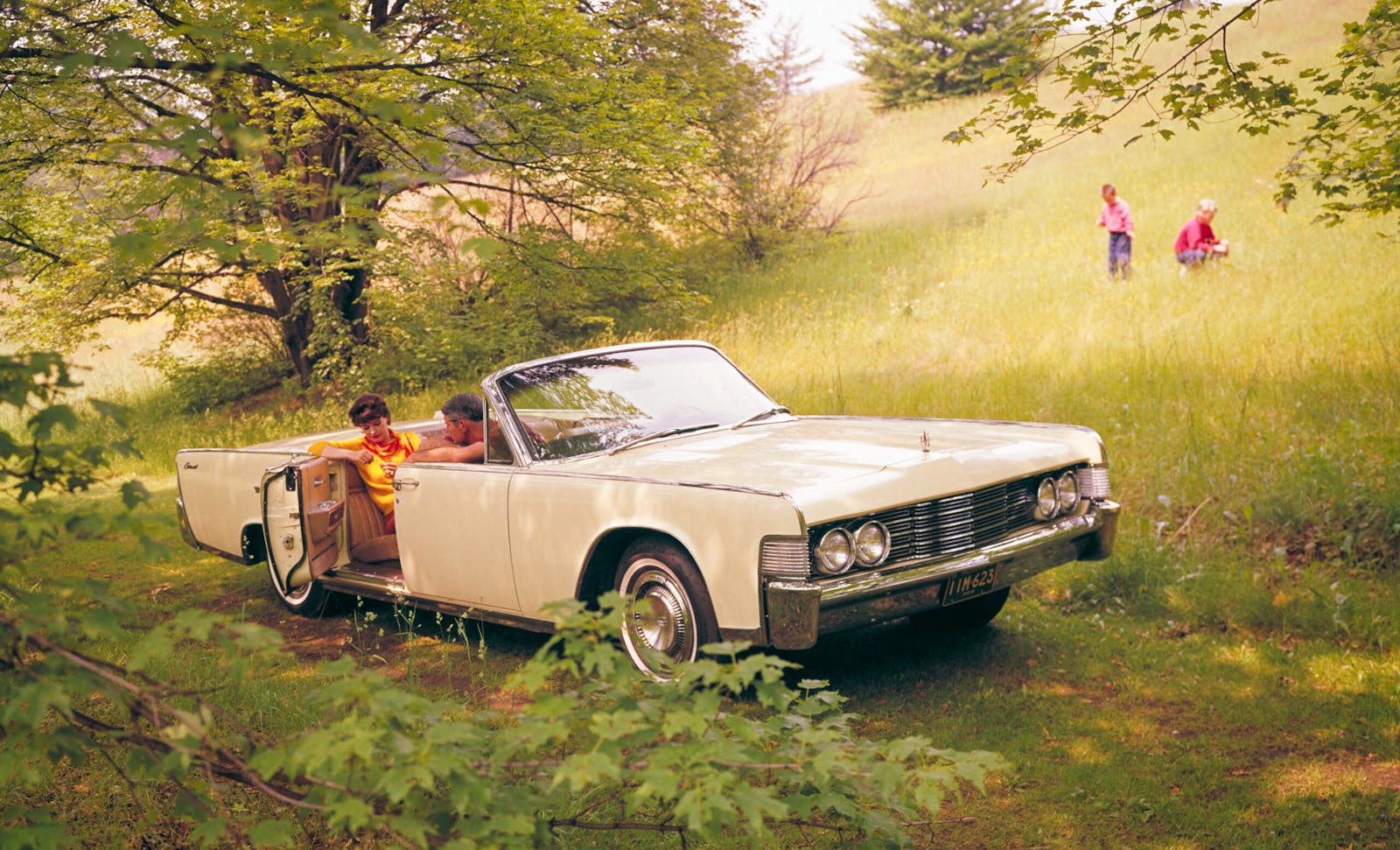






I don’t care about this stuff. I have an old car priced at 11 grand and I just want to drive it on Sundays for fun.
Paying big money for a status symbol car like these guys do probably don’t even enjoy them. They buy them
at inflated prices because they can. I bet they wouldn’t know a hammer from a screwdriver.
The value of my old cars comes from my appreciation of the engineers that designed them, the pattern makers that executed the designs into molds, the workers that made the parts, and those that assembled the car – all for my enjoyment behind the wheel. I love turning a wrench on a nut and thinking who was the last person to do so. The pocketbook analysis of old cars shifts the focus away from their true value, IMO.